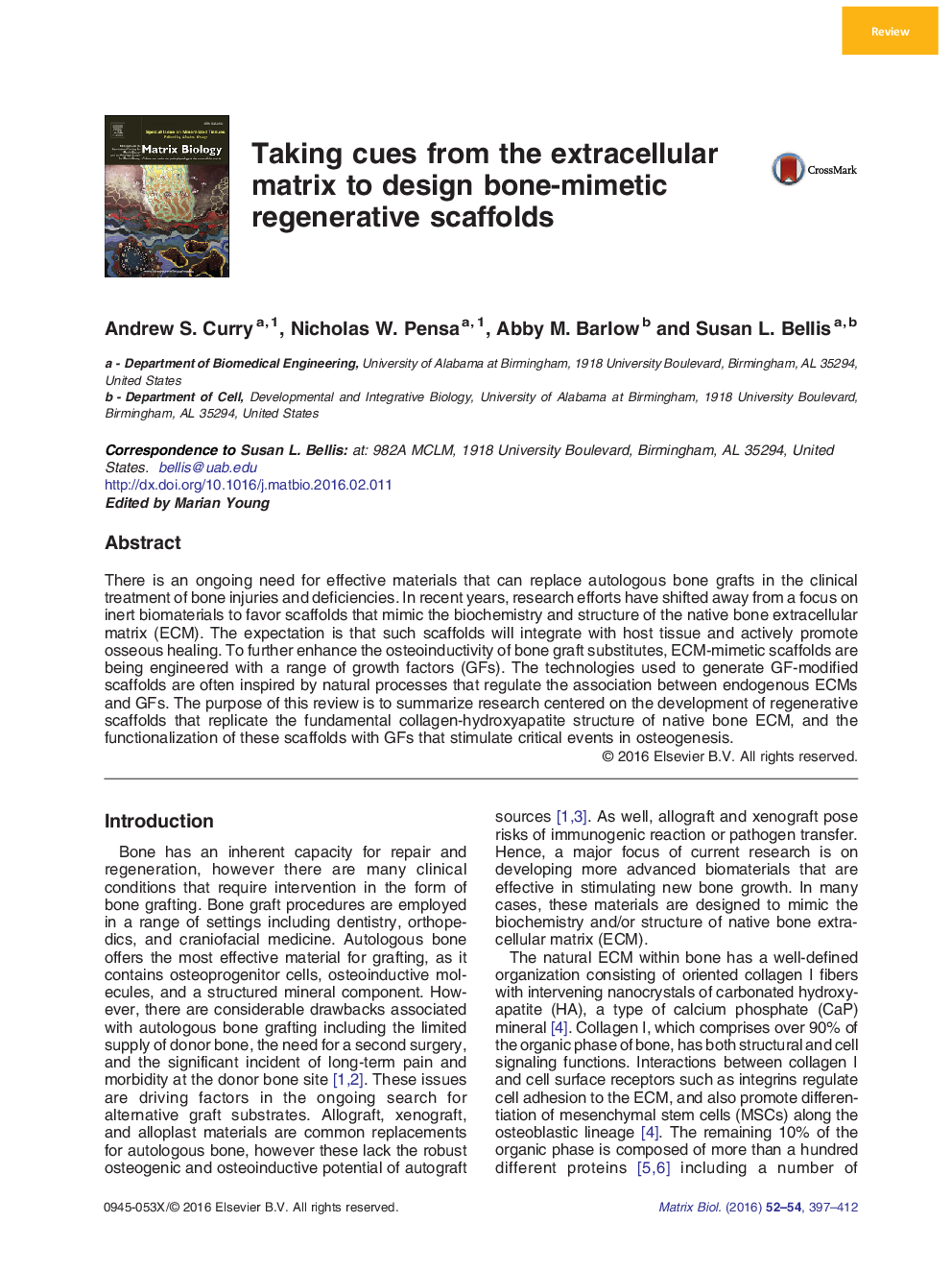| Article ID | Journal | Published Year | Pages | File Type |
|---|---|---|---|---|
| 2144697 | Matrix Biology | 2016 | 16 Pages |
•Scaffolds that mimic bone extracellular matrix hold promise for improving bone repair therapies.•The attachment of growth factors to bone mimetic scaffolds potentiates regenerative capacity.•A variety of technologies has been developed to couple growth factors to scaffolds.•Osteoinductive and angiogenic growth factors are key scaffold cargo for enhancing osteogenesis.
There is an ongoing need for effective materials that can replace autologous bone grafts in the clinical treatment of bone injuries and deficiencies. In recent years, research efforts have shifted away from a focus on inert biomaterials to favor scaffolds that mimic the biochemistry and structure of the native bone extracellular matrix (ECM). The expectation is that such scaffolds will integrate with host tissue and actively promote osseous healing. To further enhance the osteoinductivity of bone graft substitutes, ECM-mimetic scaffolds are being engineered with a range of growth factors (GFs). The technologies used to generate GF-modified scaffolds are often inspired by natural processes that regulate the association between endogenous ECMs and GFs. The purpose of this review is to summarize research centered on the development of regenerative scaffolds that replicate the fundamental collagen-hydroxyapatite structure of native bone ECM, and the functionalization of these scaffolds with GFs that stimulate critical events in osteogenesis.
